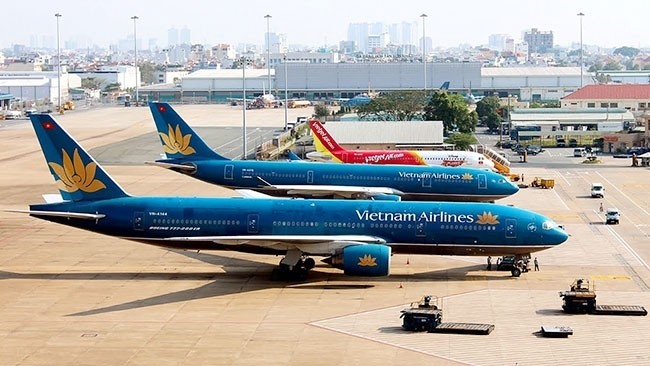Infrastructure overload
Many experts agree that Vietnam’s airport infrastructure is in a state of overload as a series of airports are facing the likelihood of being overburdened once again soon after they have been upgraded and expanded.
According to the Airports Corporation of Vietnam (ACV), Noi Bai, Tan Son Nhat, Cam Ranh, Cat Bi, Phu Quoc and Lien Khuong Airports are all operating beyond their design capacities.
A great number of opportunities are opening in the sky but if the ground infrastructure challenges are not resolved, Vietnam’s aviation sector could repeat Indonesia’s failure. When many airlines are in service, the overburdened airport infrastructure will create great pressure on management, which could lead to safety issues and widespread flight delays and cancellations.
Vietnam currently has 21 airports in operation with a combined capacity of 75 million passengers a year, just equivalent to Malaysia’s Kuala Lumpur Airport and a little more than Singapore Changi Airport’s capacity of 50 million passengers.
At present, foreign visitors who wish to arrive in Quy Nhon, Quang Binh and Phu Quoc usually have to take at least two flights with one connection from major airports such as Noi Bai and Tan Son Nhat.
Key airport hubs are overburdened, causing long waiting times for flight check-in, while most smaller local airports are operating at a loss due to scant passengers and are difficult to upgrade to international airports in order to attract foreign tourists.
Under the national aviation development plan until 2020, with a view to 2030, Vietnam will make the top four largest markets in ASEAN in terms of passengers by 2030. Vietnam’s passenger growth is expected to reach an annual average of 16% until 2020 and 8% over the next ten years.
To catch up with this strong growth, the government has approved a plan for a total of 26 airports, including those already in operation, at a cost of US$10.5 billion. 11 projects are underway, of which seven are scheduled for completion in the next three years.
Increasing airport capacity and fleet numbers over the next three years will be the key to opening new development opportunities for Vietnam’s aviation market.
While the state budget is limited, calling for the private sector’s investment is considered a feasible solution for Vietnam to attain a modern airport infrastructure system.
Therefore, economic experts state that a breakthrough in airport infrastructure is needed and the private sector’s participation in management could address the current shortcomings to improve service quality.
Huge potential
According to the Civil Aviation Administration of Vietnam, there are currently five airport infrastructure projects with the private sector’s investment which are underway or are awaiting approval, including Van Don, Cam Ranh, Phan Thiet, Cat Bi and Chu Lai Airports.
It will take a long time to recover the investment in aviation infrastructure but it will bring many benefits to the community, boost regional economic growth and improve the competitive edge of both the investors and the country.
According to a report by the US Commerce Department, with a growing GDP and population of 90 million, Vietnam is forecast to be one of the fastest-growing aviation markets in Southeast Asia over the next 10 - 20 years.
Dr Ngo Tri Long shares the same view that Vietnam’s aviation market still has a lot of room for development. In the Southeast Asian region, Vietnam has the third largest population but only ranks fifth in domestic transport infrastructure.
Vietnam’s GDP growth is forecast to continue topping the region in the years ahead, meaning there is still much room for the domestic aviation market to grow.
The attractive market is reflected in the impressive revenue and profit growth of airlines in recent years. In 2017, the total passengers of Vietnam Airlines grew by 10%, while those of Vietjet Air surged by 22%. Vietnam Airlines plans to increase its fleet to 116 in 2018 and Vietjet to 200 by 2023.
Experts on the private sector have stated that, compared with many regional countries, Vietnam is falling behind in terms of aviation liberalisation. For example, the population of Thailand is equivalent to just 70% of Vietnam’s but the country has roughly 40 airports, more than ten airlines and triple the number of international passengers of Vietnam.
Therefore, it is necessary to make it easier to grant air transport licenses and encourage more investment in airport development and operations.
Recently, property developer FLC has entered the market by establishing a new airline called Bamboo Airways, which plans to launch its first flight in October and primarily focuses on key tourist destinations.
The increase in the number of airlines is expected to change the structure of the aviation market and open more high-end markets.
Nevertheless, experts state that the air transport market is not easy to conquer because it requires a huge amount of investment, advanced technologies and is regulated by many stringent rules.
New airlines should enter the niche markets and utilise small airports in order to avoid competition from larger carriers and tap into their internal strengths.
















